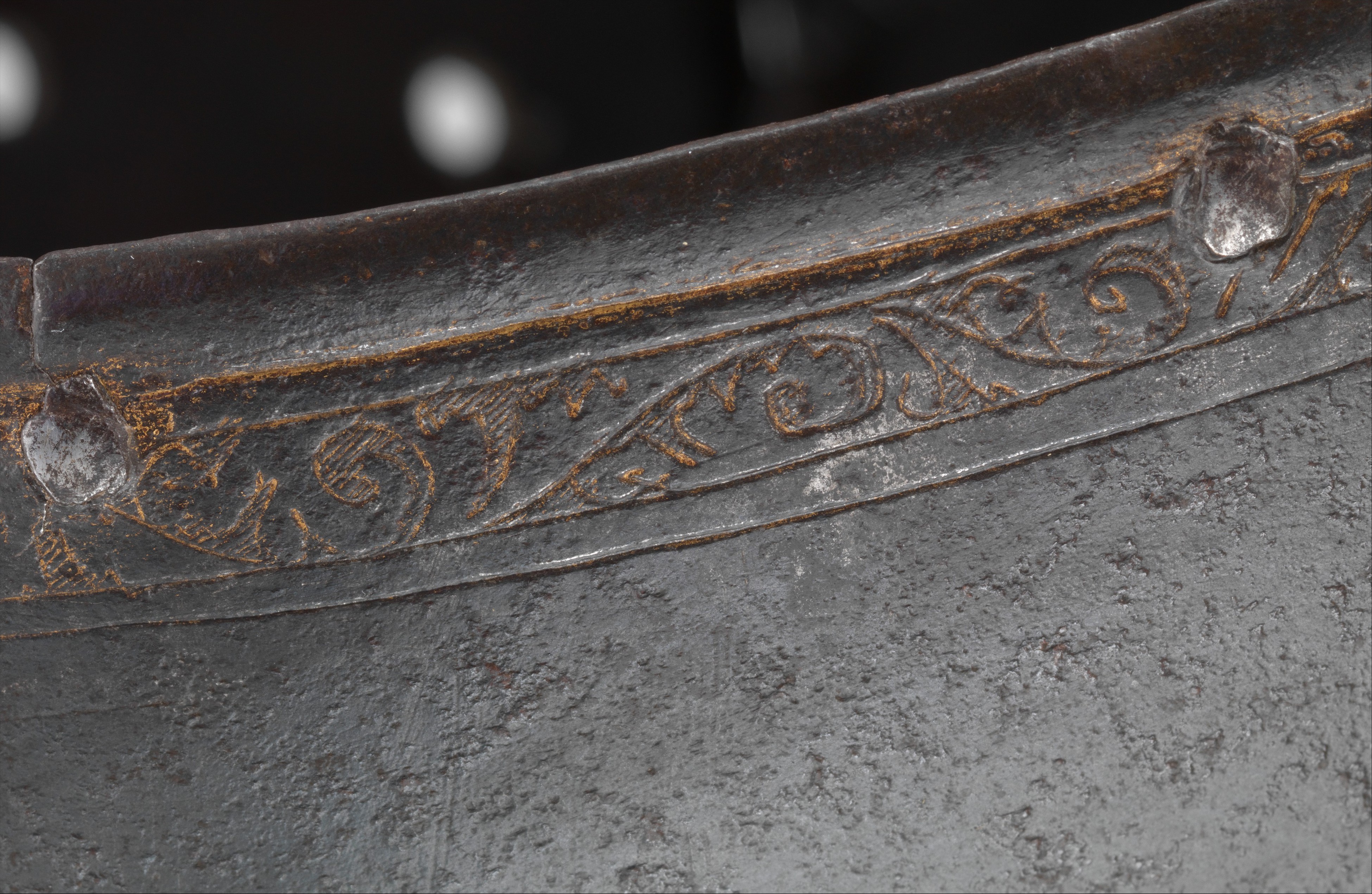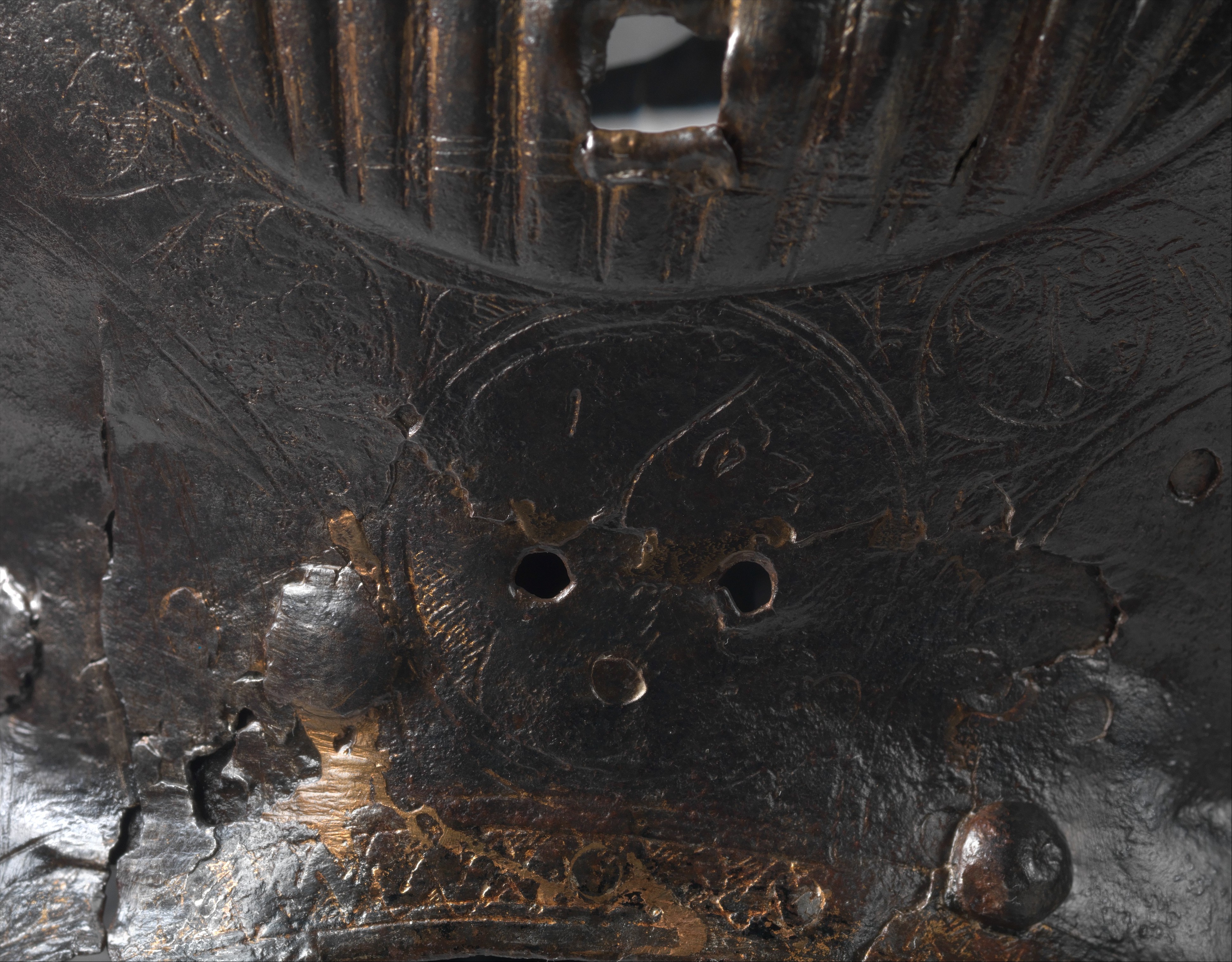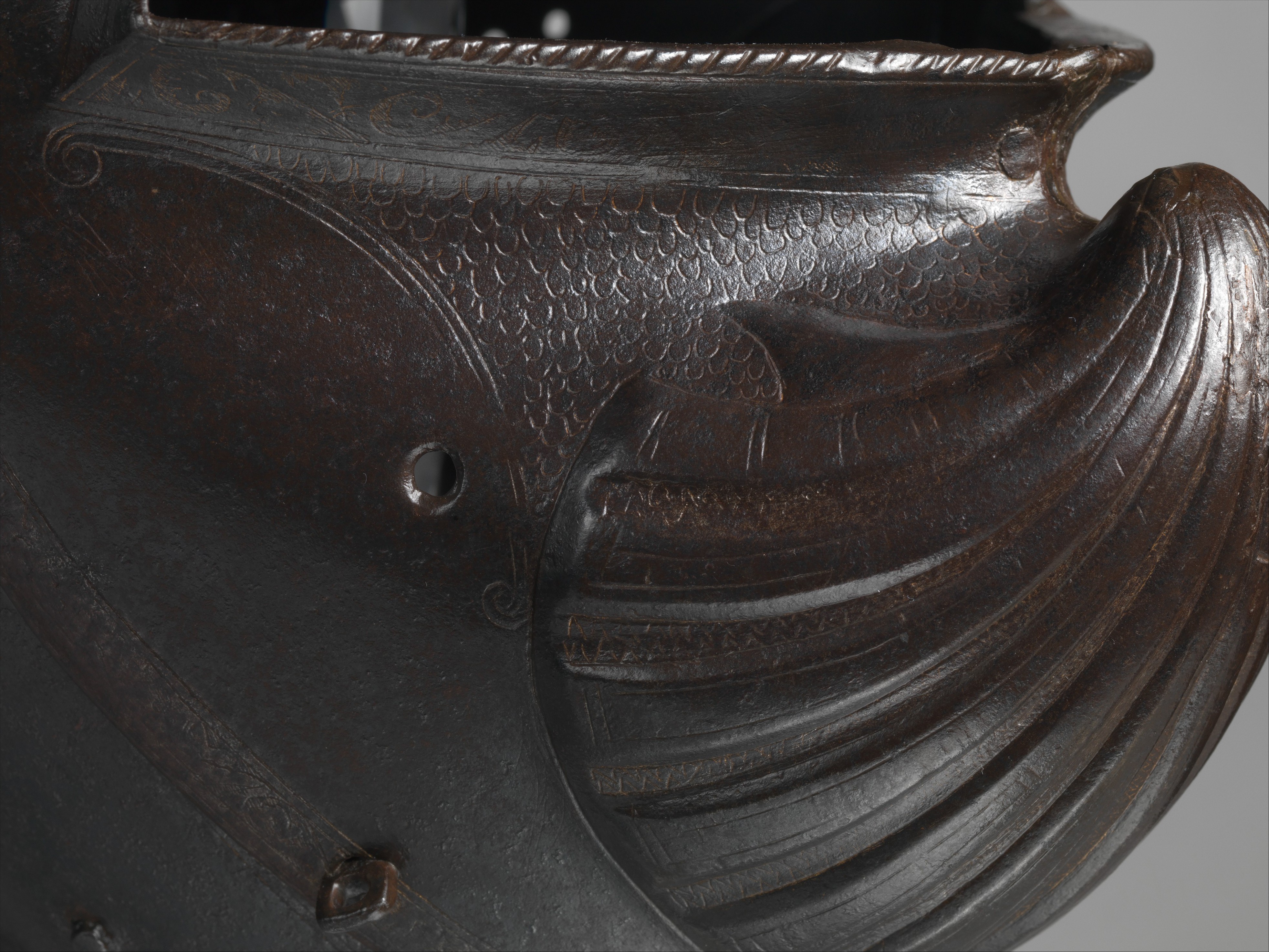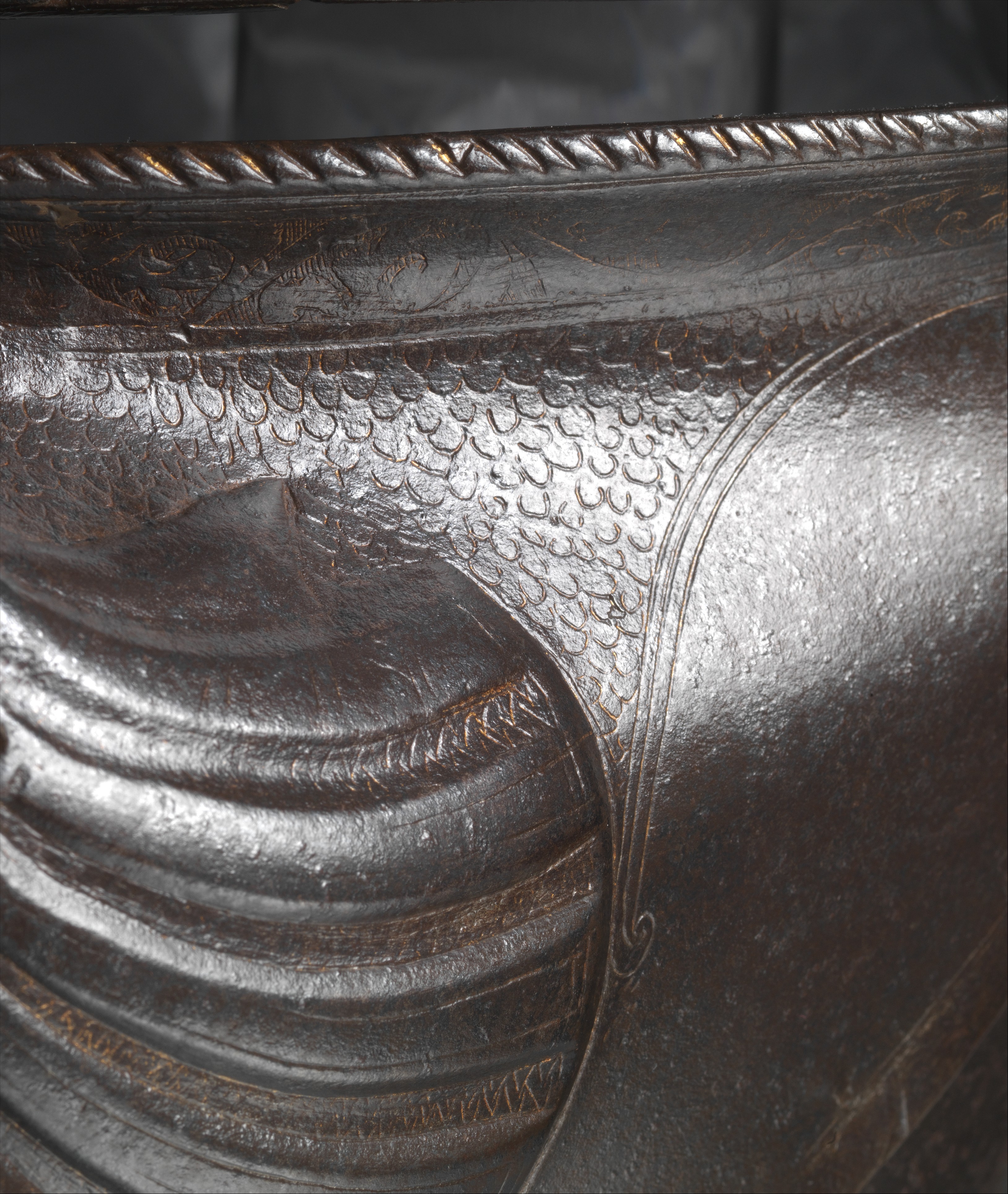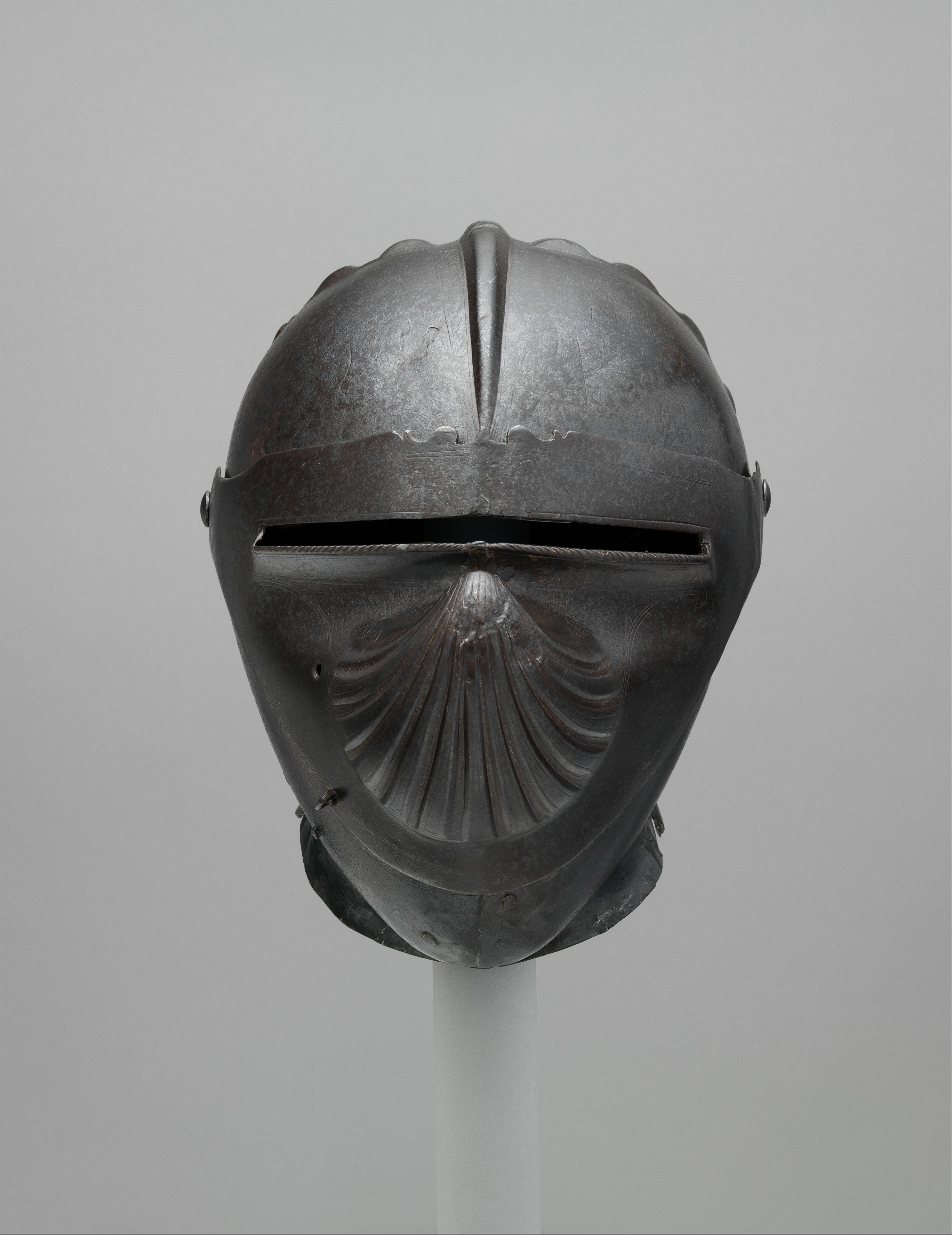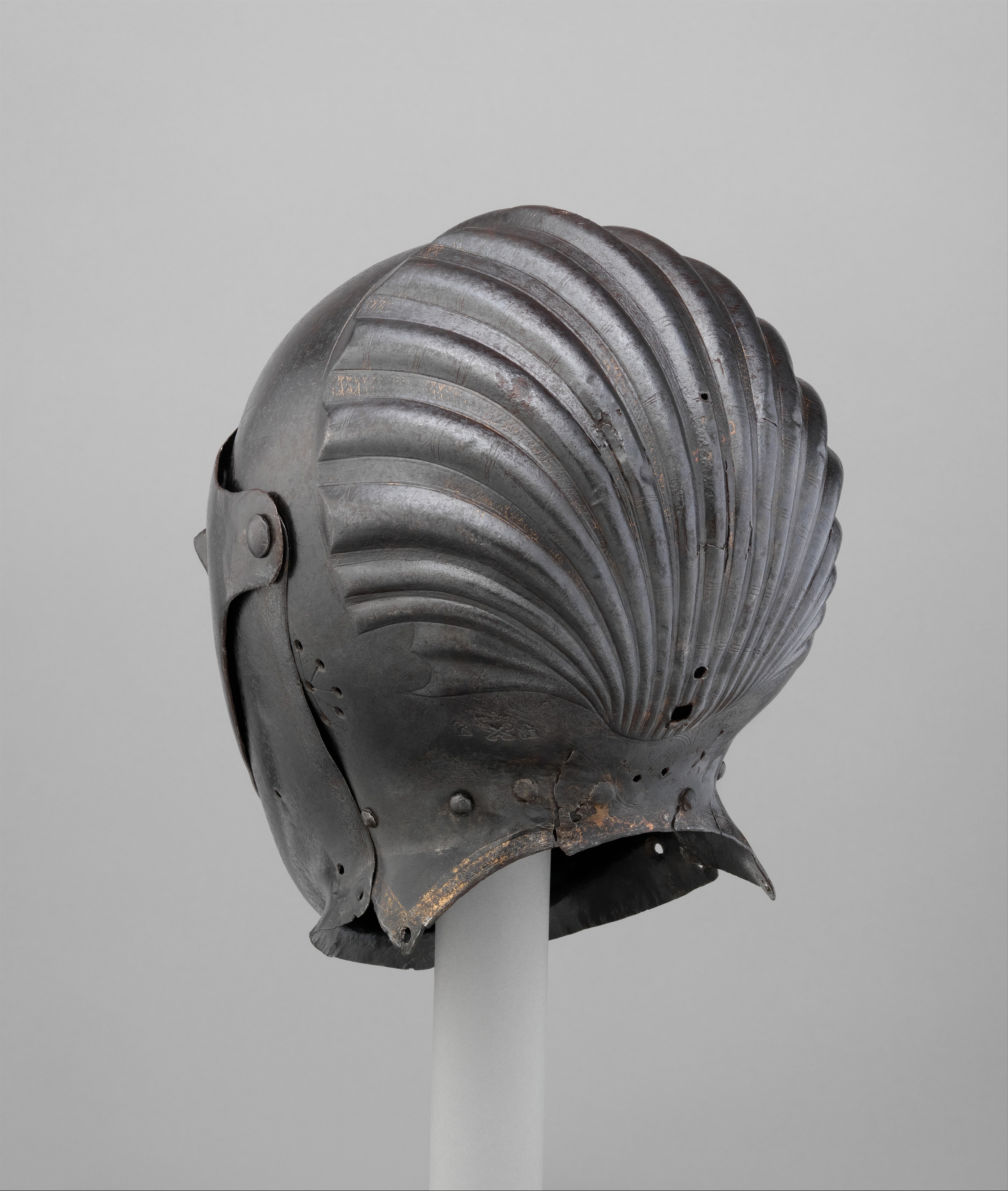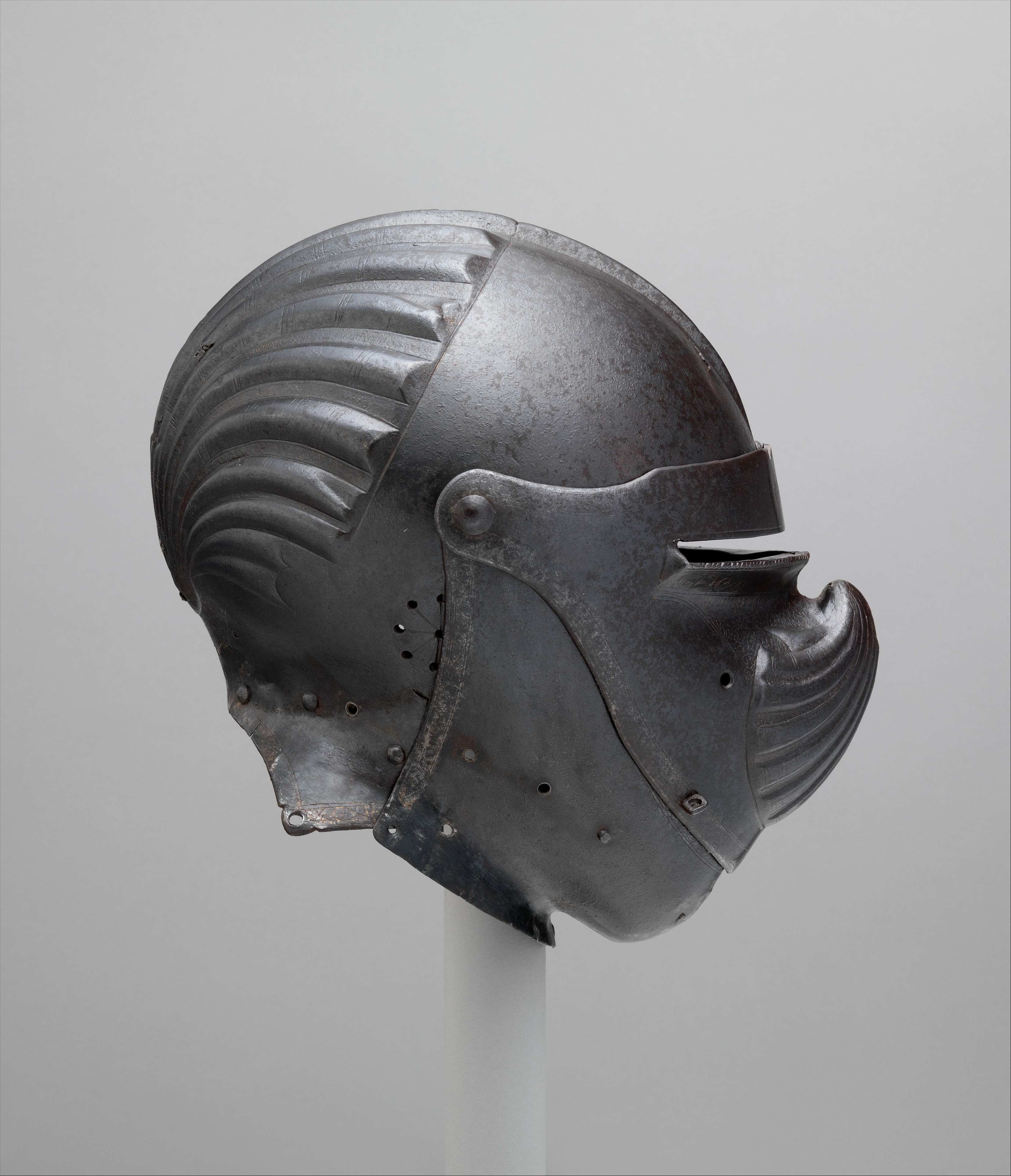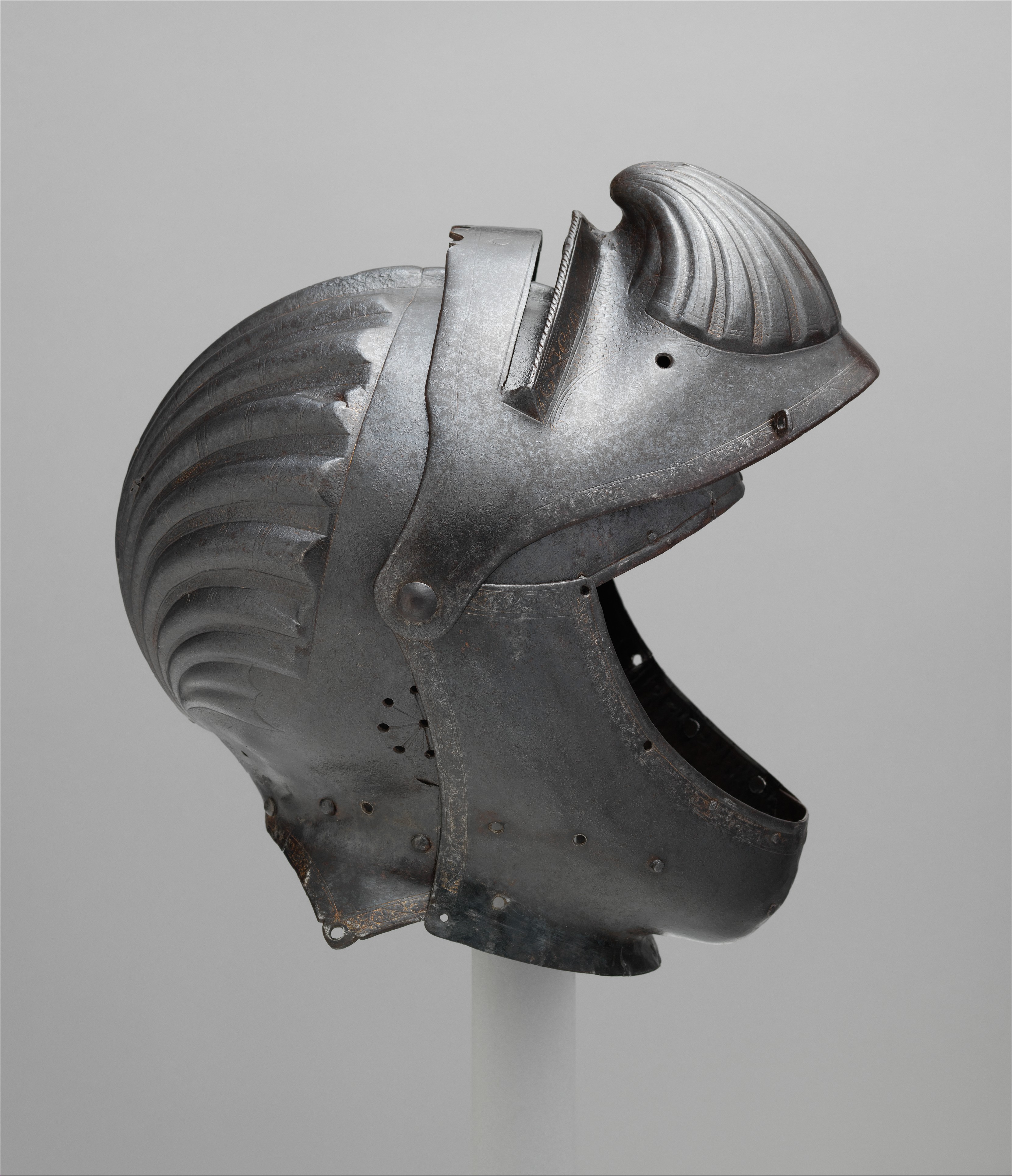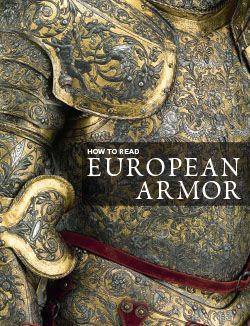Close Helmet
Armorer Gian Giacomo Negroli
As the only known work that may be ascribed with reasonable certainty to Gian Giacomo Negroli (1463–1543), this previously unrecorded helmet is a major addition to the small corpus of works marked or signed by members of the celebrated Negroli family of fifteenth- and sixteenth-century Milanese armorers––no more than twenty pieces in total––of which key examples are in the Metropolitan Museum’s collection. The father of Filippo Negroli (ca. 1510–1579), one of the greatest armorers of Renaissance Europe, and of Francesco Negroli (ca. 1522–1600), a consummate damascener, Gian Giacomo was an eminent armorer in his own right. Active in Milan around the turn of the sixteenth century, he was one of the most successful members of the Negroli family, and it was in his workshop that Filippo and his brothers long worked and presumably acquired many of the skills that distinguish their works. Until now, none of Gian Giacomo’s works had been identified and all that was known about him was thus exclusively derived from archival evidence. This helmet, which is unparalleled in design and superbly crafted, offers new insights into his abilities and accomplishments.
As a precursor to the spectacular embossed armors made by Filippo and Giovan Paolo Negroli (ca. 1513–1569), Gian Giacomo’s son and nephew, respectively, and their brothers, for powerful Italian and foreign patrons, including the Emperor Charles V of Austria (1500–1558) and the Dauphin Henry II of France (1519–1559), the helmet under consideration occupies a unique place in the oeuvre of the Negrolis. Until its acquisition, and in the absence of known precedents, it had seemed that Filippo’s and Giovan Paolo’s embossed armors had no immediate forerunners. This helmet, which exhibits both the boldness of design and virtuosity of execution that characterize their works, strongly suggests that the art of embossing armor in Milan began a generation earlier, with the work of Gian Giacomo. Made at least a decade before Filippo’s first known work––a burgonet (helmet) that he made in 1532 for Francesco Maria della Rovere (1490–1538), duke of Urbino––this helmet now ranks as the earliest identified embossed work by any of the Negroli armorers. It is the hitherto missing precedent for the ambitious and highly regarded embossed armors made by Filippo and Giovan Paolo Negroli, and as such a point of departure in the historical development of a style of luxury armor that would bring great fame to Milan and the Negrolis in particular.
This helmet is the first work by the Negrolis to incorporate into an entirely functional and serviceable helmet the fantasy for which they earned great fame and are perhaps best remembered today––in this instance seashells embossed in relief on the bowl and visor. While early sixteenth-century Italian armor was sometimes decorated with embossed ribs or seashells on the rear of the helmet’s bowl, the couters (elbow defenses), and poleyns (knee defenses), the seashell embossed on the visor of Gian Giacomo’s helmet is unprecedented, and an unmistakable manifestation of the master’s creativity and audacity.
It is also a rare example of Italian armor made in the German style (alla tedesca), presumably for export north of the Alps or for an Italian client with northern tastes. Unlike the standard type of Italian cavalry helmet, which is constructed with cheekpieces hinged to the lower edge of the bowl, it has a visor and a bevor designed to rotate on common pivots at the sides of the bowl, in the manner of most German examples of the period. In this, it may be compared to a backplate decorated with flutes in the German fashion, which bears the marks of Francesco Negroli, in the Metropolitan Museum’s collection (acc. no. 2014.154).
Due to rights restrictions, this image cannot be enlarged, viewed at full screen, or downloaded.
This artwork is meant to be viewed from right to left. Scroll left to view more.




